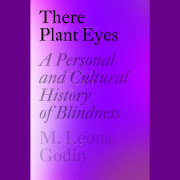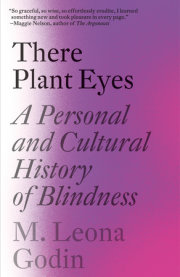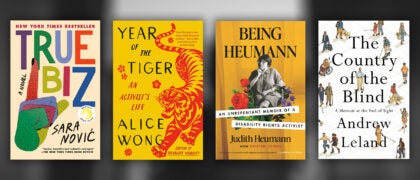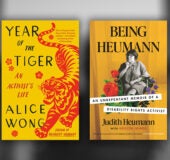1. Homer’s Blind Bard
Homer, the author generally credited with the composition of
The Iliad and
The Odyssey—two of the oldest works of Western literature
—is in large part responsible for the tradition of the blind bard, and yet so little is known about him and his life that most scholars believe him (and his blindness) to be legendary. Most accounts of Homer come to us from centuries after he purportedly lived, and even in the ancient world there existed skepticism regarding his blindness, as succinctly represented by Proclus (a philosopher of late antiquity), who in his
Life of Homer turned the doubt into a kind of aphorism: “Those who have stated that he was blind seem to me to be mentally blind themselves, for he saw more clearly than any man ever.”1
Although this kind of ocularcentrism (how can a blind person speak clearly about the visible world?) will be echoed about other blind writers from John Milton to Helen Keller, the idea that Homer was blind has endured.
The two great epic poems associated with the name Homer were probably composed in the eighth or seventh century BCE, about events during (
The Iliad) and after (
The Odyssey) the Trojan War, which itself, if historic, took place a few hundred years earlier in a distant heroic age. These epics as they’ve come down to us should be understood as a kind of tapestry of older legends and stories sung by many bards in many different versions, some of which were codified under the authorial name Homer.
The tradition of the blind bard in Western literature originates not in histories or biographies of Homer, but in
The Odyssey itself. When Odysseus meets the blind bard Demodocus in the court of King Alcinous (leader of the Phaeacians) the moment feels rather meta: the fictional blind bard of the
Odyssey as stand-in for the legendary blind author Homer: “The house boy brought the poet, whom the Muse / adored. She gave him two gifts, good and bad: / she took his sight away, but gave sweet song.”2
This is from Emily Wilson’s 2018 translation of
The Odyssey. The famous passage sets forth the concept reiterated in Western culture again and again: the poetic gift is compensation for the physical lack of sight. Both the lack of sight and the gift of poetry come from the gods. The invocation of the Muse at the start of all great epics announces the poet’s receptivity, and that receptivity is a matter of ears, not eyes. The poet demands not that the Muse show but tell: “Sing to me, O Muse!”
I first remember reading, or rather attempting to read,
The Odyssey in the tenth grade, but by then my eyesight had deteriorated to such an extent that I did not make it very far. I confronted endless blocks of text (so perhaps it was a prose version created for high school readers) and, after just a few pages took me hours—the words breaking apart before my eyes, making comprehension nearly impossible—I attempted to write an essay about the book without having come anywhere near finishing it. I received a D for the paper, my first, and it was terrible. As an English honors student and a once-avid reader, I blamed and hated the teacher for my failure. I would not finish
The Odyssey for several years—not until I found myself studying Greek and Latin at UC Santa Cruz (Go, Slugs!). Only then, as this anomalous creature—a classics major at a school best known for redwood groves and marijuana—did I first begin to identify with blindness in all its complexities and contradictions.
In fact, it was my Greek and Latin tutor (paid by Disabled Students Services to give me extra help outside of class) who first made me realize that blindness was not just my future calamity, but also a cultural phenomenon. “Did you know,” he said, “that the ancients revered the blind as poets and prophets?”
By then I knew about Homer, of course, but I hadn’t really thought about what the blind bard might have to do with me. With my CCTV—a cumbersome magnification system involving a seventeen-inch monitor that blew my Greek and Latin texts up into inch-high characters—at home, and the bulky packets of passages printed in forty-point type—which were still hard for me to read, but helped me to follow along in class—I did not feel very much like a poet or a prophet. I surely did not feel the compensatory powers set forth in
The Odyssey and reiterated again and again in Western literature. I did not know then that my tutor’s words would set me on my path to read metaphorical blindness against its realities. I did, however, have an inkling that this other blindness—the metaphorical kind—might provide some compensation after all. That I might do well to identify with metaphorical blindness in order to mitigate the intense shame I’d felt throughout my teens.
For it was shame that was—from about the age of twelve—my dominant feeling with regard to my visual impairment. Shame for the things I could not do. Shame at not being able to recognize faces, shame at not being able to see street signs, and above all, shame at not being able to read. If I had been a different kind of kid with different kinds of friends, I might have been bummed not to be able to catch a ball—and to be sure, there have been times in my life when play eluded me because of my poor sight. Mostly, however, my friends were the type of people who smoked, drank, made art, read, and frequented used record and book shops. So much of my time was spent trailing them around Green Apple, a used-book shop on Clement Street in San Francisco, inhaling that familiar scent of old paper everywhere, scrutinizing the covers in hopes of being able to find some words—a title or an author’s name—large enough to recognize and perhaps purchase, maybe even show it off.
For some years to come, I would still be able to read (very) large print, and I could recognize my books by their covers, but by eleventh grade, most printed pages held only decorative lines of black ink for me. I could see the shapes of words dancing along, but without extreme magnification, no matter how much I squinted or maneuvered the page I could not read a single word.
My inability to read
The Odyssey when I was in high school—before I was introduced to all the technology (the CCTV, the computer with speech output, later my braille display) that makes digital books accessible today, and even before I was introduced to recorded books when I was eighteen—echoes an irony at the heart of the blind Homer tradition. The books that have come to us as
The Iliad and
The Odyssey are written documents derived from a much older oral tradition. The dominance of the written word over that oral tradition made the reality of a blind reader, let alone a blind writer, a near impossibility, at least until the invention of first raised type and, later, braille in the eighteenth and nineteenth centuries. Even then, accessing the tools of the trade—the work of other writers, the means of writing—has hardly been easy for the blind writer.
“Believe me,” Jorge Luis Borges said in an interview a year before his death, “the benefits of blindness have been greatly exaggerated. If I could see, I would never leave the house, I’d stay indoors reading the many books that surround me. Now they’re as far away from me as Iceland, although I’ve been to Iceland twice and I will never reach my books.”3
This quote is heartbreaking, coming from a man who headed up the Argentinian National Library and wrote such intricately wrought, book-oriented stories as “The Library of Babel.” The quote is also, however, surprising and a bit odd, coming as it does from someone who continued to have a wonderful career long after losing his ability to read. If reports of the benefits of blindness have indeed been exaggerated, Borges himself is not innocent: “Blindness has not been for me a total misfortune,” he explains in “Blindness.” “It should not be seen in a pathetic way. It should be seen as a way of life: one of the styles of living.”4 This reminds me of the rallying cry of the actor and playwright Neil Marcus, who has helped to reify disability culture: “Disability is not a brave struggle or ‘courage in the face of adversity.’ Disability is an art.”
Borges continues this train of thought by affirming that “being blind has its advantages,” and credits it with many gifts, including another book “entitled, with a certain falsehood, with a certain arrogance,
In Praise of Darkness.” Then he moves on to “speak now of other cases, of illustrious cases.” Beginning with the “obvious example of the friendship of poetry and blindness, with the one who has been called the greatest of poets: Homer,” he goes on to mention others that we will encounter in this book: John Milton, whose “blindness was voluntary,” and James Joyce, who “brought a new music to English.”5
Copyright © 2021 by M. Leona Godin. All rights reserved. No part of this excerpt may be reproduced or reprinted without permission in writing from the publisher.










